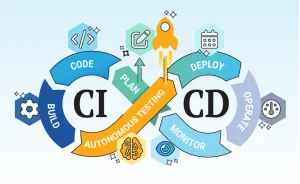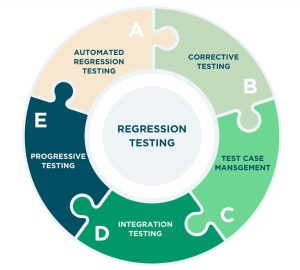How to Build a Bulletproof QA Process
Introduction In today’s fast-paced tech world, speed matters. But quality matters even more. No one wants to launch a product full of bugs or deliver a user experience that do...

Introduction
In today’s fast-paced tech world, speed matters. But quality matters even more. No one wants to launch a product full of bugs or deliver a user experience that doesn’t live up to expectations. That’s where quality assurance (QA) comes in – not as a final check, but as an ongoing, strategic process that ensures everything runs smoothly from the start.
So how do you create a robust QA process? One that identifies issues before users do, adapts quickly to changes, and keeps your team productive? Let’s find out.
Start Early – Test Often
One of the biggest mistakes companies make is putting off QA until later. By then, fixing issues becomes expensive and time-consuming. A robust QA process starts right from the planning stage.
Involve QA engineers in discussions from day one. Involve them in requirements gathering. Let them ask questions about edge cases, explore potential risks, and deeply understand business logic. This early involvement helps shape a product that is easier to test and far less prone to failure.
Pro tip: Shift left
Use a “shift left” approach – moving QA tasks earlier in the development cycle. This leads to faster feedback, better collaboration, and fewer surprises later.
Build a Collaborative Culture
QA shouldn’t be an island. Developers, designers, project managers, and QA engineers should work as a team. Communication is key. Clear documentation, shared expectations, and open feedback loops help avoid misunderstandings and missed bugs.
Encourage everyone to take responsibility for quality. When developers write unit tests and designers provide usability recommendations, QA becomes a shared responsibility, not just the last hurdle before release.

Create a Solid Test Plan
You can’t fix what you don’t track. That’s why a well-defined test plan is essential. It sets expectations, outlines goals, and defines what success looks like.
Your plan should include:
- Scope – what features or components are being tested.
- Test types – unit, integration, UI, regression, performance, etc.
- Tools and frameworks – choose tools that fit your stack and team’s skills.
- Schedule – when will tests be run? How often? Who is responsible?
Make sure the plan remains flexible. Requirements should change. So should your test cases.
Automate What You Can
Manual testing has its place, especially when it comes to exploratory testing or checking visual and UX elements. But automation is the backbone of a scalable QA process.
Start small. Focus on high-impact, repeatable tasks like:
- Smoke tests
- Regression tests
- API testing
- Cross-browser checks
Tools like Selenium, Cypress, or Playwright can help speed up the process. Don’t overdo it with automation, though – maintaining flaky tests can slow down your team more than it helps.
Pro tip: CI/CD integration
Hook automated tests into your CI/CD pipeline. That way, every time new code is pushed out, it’s tested instantly. Faster feedback = fewer issues in production.

Track Bugs the Right Way
Bug tracking is more than just logging issues. It’s about documenting them clearly, prioritizing them effectively, and learning from each bug.
Every bug report should include:
- Steps to reproduce
- Expected and actual results
- Screenshots or videos if needed
- Environment details
Use tools like Jira, Azure DevOps, or Linear to manage and prioritize. Encourage developers and QA to communicate directly and resolve issues together, rather than through a long email chain.
Don’t Skip Regression Testing
It’s easy to get excited about releasing new features. But don’t forget to test what’s already working. Every code change can cause ripple effects.
Set aside time for regular regression testing. This helps ensure that old bugs don’t return and that stable features stay the same.

Keep Learning and Improving
Even the best QA processes need adjustments. Make continuous improvement a part of your routine. After each sprint or release, reflect:
- What went well?
- What caused delays?
- What bugs slipped through and why?
Use retrospectives to improve. Update your test cases, improve automation, and optimize collaboration. Growth is part of building resilience.
Tools Matter – But People Matter More
QA tools are essential. But the people behind the process are even more important. Empower your QA engineers. Give them the ability to think critically, explore creatively, and raise red flags with confidence.
Encourage professional development. New tools and techniques are emerging all the time. Allow your team to experiment and develop their skills. The stronger your team, the stronger your QA.

Conclusion
Building a robust QA process isn’t about following a rigid set of rules. It’s about creating a quality culture where everyone contributes, adapts, and continually learns.
Done right, QA isn’t a bottleneck. It’s the engine that drives better products, happier users, and more confident teams.
If you need expert support to build or improve your QA strategy, InStandart is here to help. Whether it’s automation, process consulting, or a full range of QA services, we’ve got you covered.